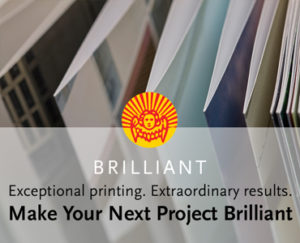Training and challenging ourselves with new technologies and new projects (within our position if possible, but also outside and on our own time)
The more the industry changes, the more you must adapt
Like other industries, our industry is constantly changing. That’s why you must adapt your core skillset to what the market of today demands. Here’s an example of what I mean.
Last week, I wrote social posts for a brand. To do it, I opened a Google Doc, did the writing assignment, never bothered saving it (not necessary with Google Docs) and then shared it with the account person for review.
25 years ago, I pecked away on an IBM Selectric II typewriter. When I finished typing the print ad and fixing some mistakes with corrective strips, I pulled the paper out of the typewriter and handed to the office manager who keystroked it into a Mac Plus.
In this example spanning 25 years, the function I performed, copywriting, was essentially the same. What has changed is mediums, social vs. print ads, technology tools, Mac Air and Google cloud computing vs. IBM typewriter and, finally, the style of writing is different—persuasion vs. engaging.
Yes, I’ve seen a lot a change throughout my ad career. I bet you have too, whether you’re a copywriter, a graphic designer, an art director, a production artist or a creative director. The key to career success is taking your greatest strength and molding and remolding it to what agencies or clients will pay you for today.
Your one thing
Remember that scene from the movie City Slickers when Billy Crystal’s character, Mitch Robbins, asks Curly, played by Jack Palance, what the meaning of life is? Curly holds up his index finger. Crystal’s answer was funny. “Your finger?” Cury’s point was the secret of life is one thing. He said, “You stick with that, and the rest don’t mean shit.”
Of course, what we’re talking about is your one thing applied to your ad career. As Curly advised Mitch, you have to figure out what your one thing is and nothing else matters. For me, my one thing is concepting and short copy.
I’m not a features writer. I’m not a technical writer. I’m not a writer with a book in me. I blog and write articles like this, but it’s painful. But give me an assignment that requires conceptual thinking to solve a marketing challenge and demands creating messaging, that excites me and I can’t stop thinking about it.
What’s your one thing? If it’s design, what’s your specialty? Is it art direction? Be more specific. Is it creative direction? Sharpen your focus. There’s a lot of competition out there. You have to get to the core of your talent that’s bankable.
Not sure what your one thing is? Think back to your biggest successes or when you were praised the most. I bet your one thing is in there. I also recommend taking the StrengthsFinder test, which identifies your top five strengths. Your one thing is somewhere in that top five. I’d venture to guess it’s in your top two strengths.
What has changed
Plenty has changed in the ad industry. Like most industries, we’ve been forced to adapt to Moore’s Law, endless application updates, the Internet and now we’re adjusting to social media, cloud computing and mobile. Put it this way, I haven’t seen an art director or designer open QuarkXPress lately.
I never thought I’d stop writing in Word, saving docs and emailing them. But lately I’ve adapted to Google Drive, not saving anything, and just sharing it. Everyone where I work uses Google Drive. Sure, I could insist on using Word, but what would my Millennial peeps think? You have to fit in before you can stand out.
Change is hard but a necessity. To fit in workplaces or make money in my career, I’ve packaged myself as a copywriter, a content developer, a blogger and a marketing consultant. I just mold to whatever the title is and do my one thing.
You have to be your own change agent, always on the lookout for what’s new and could alter the business need you fulfill. What about social platforms like Pinterest and Instagram? What about crowdsourcing? How will each innovation change or reinvent what you do? Stay calm. Stay current.
Adapt to constant change
The ad industry changes every year. While sometimes you can ignore change and go about your business or craft, sooner or later, it’ll catch up with you. The key is to stay current while staying true to your one thing. To do that, you have to be willing to adapt, repackage or mold into that shiny new penny that everyone wants.
If I can do it, I know you can do it.
This POV brought to you by a member of Boom Ideanet, “Instant bandwidth for the creative department of the future.”
Five Actions To Take Before Your Next Presentation
You're scheduled for a presentation. Maybe presenting to a few decision-makers, perhaps speaking to a larger audience. Either way, positive actions beforehand can make you a stronger presenter. Here are five suggestions: 1. Live with your audience Once you commit to a...





